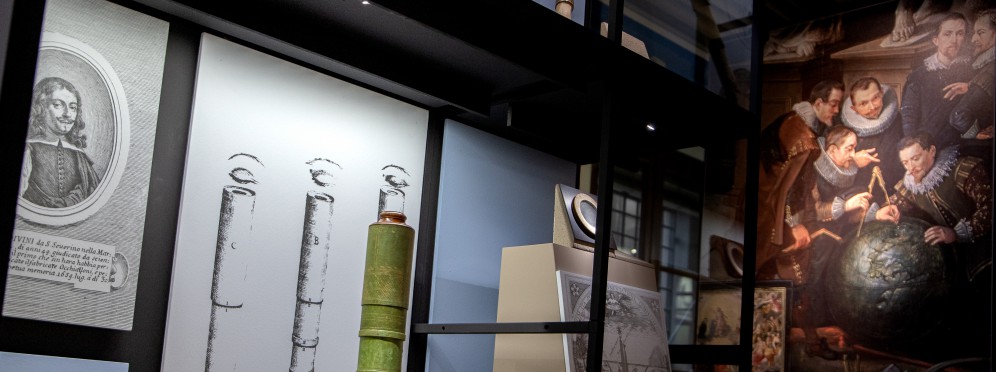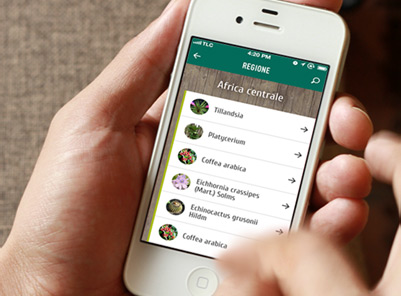Giovanni Poleni Museum
Activities

RECENT AND ONGOING PROJECTS
SCIENCE FROM THE ISLAMIC WORLD TO TODAY'S EUROPE - A bridge between civilisations and cultures
2022-2023
Making the general public aware of some developments in science, from the contributions of the Islamic world to today's physics and astronomy, is the aim of the project “Science from the Islamic world to today's Europe. Cross-Fertilization between past and future”. Proposed by the Department of Physics and Astronomy of the University of Padua and the Giovanni Poleni Museum, the project is financed by the University of Padua. It unites the University of Padua with the city to shed light on exchanges and cross-fertilisation between different countries and cultures.
The project encompasses various activities: the formation of working groups, various public events and a temporary exhibition.
Working groups
From December 2022, PhD students and post-doctoral fellows from the Department of Physics and Astronomy have been working in synergy with people from the local community, of all nationalities, and in particular members of the Islamic communities. The goal is to develop new science communication projects on the theme of interculturality, using the rich collection of scientific instruments of the Giovanni Poleni Museum. It is, in fact, a co-creation process involving people with very different backgrounds.
The groups' proposals will become an integral part of the educational programs of the Giovanni Poleni Museum and the participants can continue to present them to the public, becoming long-term collaborators of the Department and the Poleni Museum.
Public events
In parallel with the work of the groups, the project proposed various public events, including lecture-demonstrations for children and families, guided tours of the Giovanni Poleni Museum and a series of lectures that took place in various venues: the Poleni Museum, the Department of Physics and Astronomy and Padua City Museums.
More information in the Italian section of the website
Temporary exhibition “GLASS. From Roman Antiquity to Space Probes”
The exhibition was opened from 16 December 2022 to 10 May 2023 at the Giovanni Poleni Museum. It presented to the public the physical properties of glass, highlighting the various ways in which this material was produced and some of its uses from Roman antiquity to Islamic times, up to today's cutting-edge research in physics and astronomy.
Curators: Sofia Talas, Alessandro Patelli, Fanny Marcon, Giulio Peruzzi and Monica Zagallo.
More details on the exhibition in the Italian section of the website
More details on the whole project on the website of the Department of Physics and Astronomy
Erasmus+ project: Teaching With Objects
2022-2025
The Giovanni Poleni Museum and the Department of Physics and Astronomy of the University of Padua are actively involved in the Erasmus Plus project “Teaching With Objects”.
This three years project, started in March 2022, involves the University of Padua along with the Dutch Foundation for Academic Heritage, University of Strasbourg, Humboldt University Berlin, University Museum Ghent, and Things That Talk.
The academic heritage objects that are kept and cared for in our museums, archives, and libraries have a great potential to enrich teaching and learning in higher education. Surprise, wonder, awe, curiosity are emotions and reactions object interactions can elicit among students. Teaching with objects enables students to engage deeply and creates profound and meaningful learning experiences. Using university collections in the classroom can also provide a concrete and tangible view of the place and role of universities in society through time.
The objective of this project is to promote and support innovative object-based teaching practices in higher education by collecting and evaluating existing methods and tools, with a focus on digital and hybrid didactic situations. We aim at enhancing collected practices, tools, and methodologies, before making them accessible for a broad audience of teachers, students and researchers by building a sustainable online toolbox for object-based teaching. In addition, we are identifying and building a network of actors involved in object-based teaching to explore the opportunities and challenges of teaching with academic heritage objects in the digital age. This will also initiate and stimulate a lively and continuing discussion of innovative ways to teach and learn with objects and contribute to the reinforcement of international professional networks.
Project Website: https://www.teachingwithobjects.org/
Contact details:
Sofia Talas, coordinator: sofia.talas@unipd.it
Giulio Peruzzi, responsible for the project: giulio.peruzzi@unipd.it
Monica Zagallo, researcher: monica.zagallo@unipd.it
Fanny Marcon, researcher: fanny.marcon@unipd.it
Scattered collections
2015-2016
Alongside the collections officially acknowledged by the university authorities and included in the statute of the University Museum Centre, the University of Padova is home to a vast, and widely dispersed body of material developed and produced in the course of the institution’s teaching and research activities. Such objects and materials might rightly be considered a key constituent of the university’s historic heritage, yet we know so little about it. Hence the idea behind the Scattered Collections project.
Thanks to funding from the university itself, two year-long research grants were awarded. The project unearthed various collections of huge historical, cultural and scientific importance, and led to a report that i) presents the conditions and state of these collections (in terms of vulnerability, extent, potential) and ii) provides guidelines for managing them going forward (conservation, storage, security measures, potential and optimal use, etc.).
Project leader: Giulio Peruzzi
Coordinator: Sofia Talas
Grant recipients: Giulia Nicchio, Fanny Marcon
RECENT AND CURRENT CONSERVATION PROJECTS
The electromagnetic devices conceived and manufactured in the early years of the 19th century by the university’s Professor of Experimental Physics, Salvatore Dal Negro, are currently undergoing conservation work.
These unique instruments – items of huge significance in the history of electricity – had long lain dismantled in one of the museum’s store rooms. They are do to be reassembled for the first time following a period of research. Plexiglas replicas will replace some of the missing components, a solution that will allow visitors to see just how the devices originally worked and how they were used.


